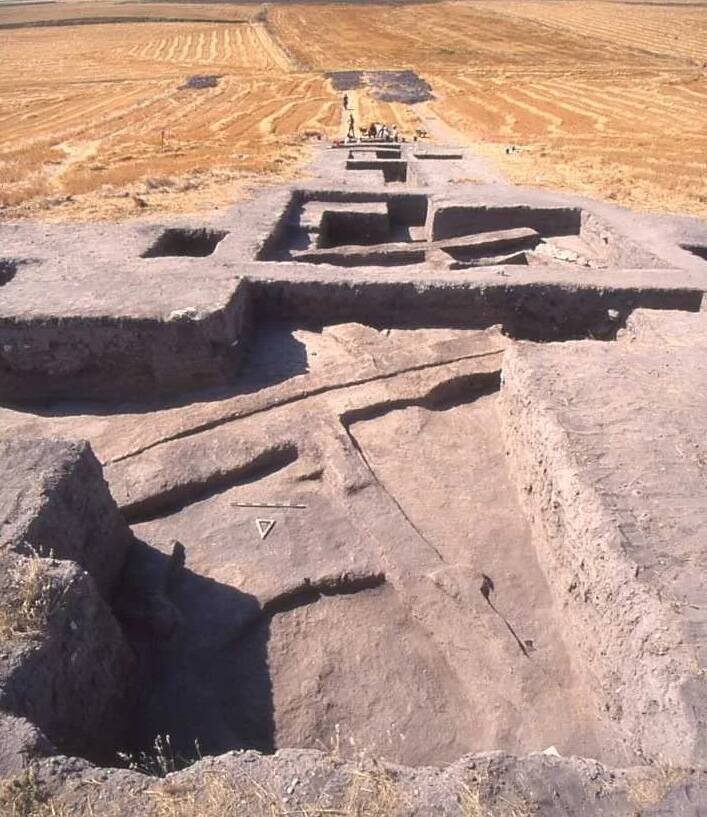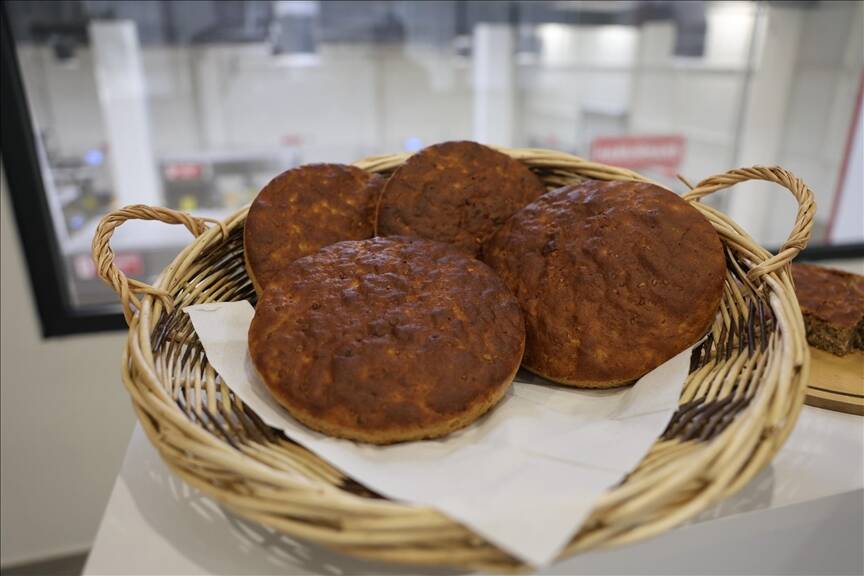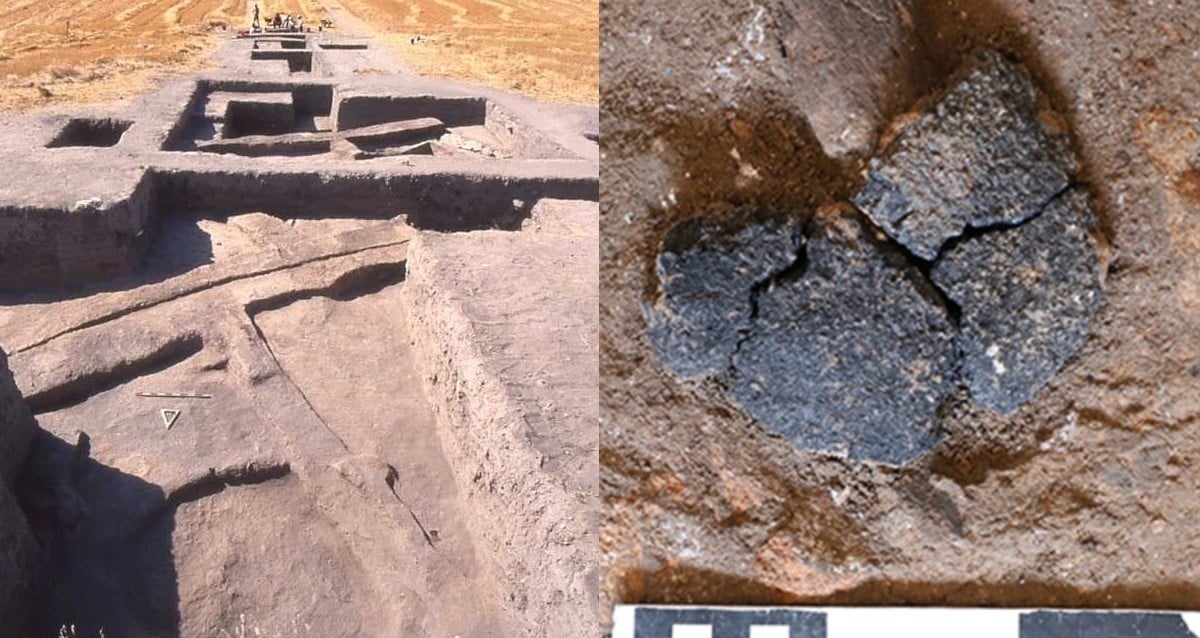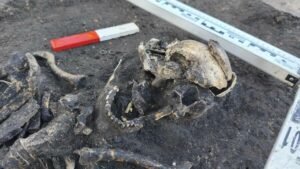Ancient Secrets Unveiled: Bakers Bring 5,300-Year-Old Turkish Bread Back to Life
Ever wonder what a five-inch loaf baked 5,300 years ago tastes like? I mean, who’d have thought that a tiny round bread made from emmer wheat and baked nice and quick at 300 degrees Fahrenheit could survive millennia, only to inspire modern bakers to whip up thousands of replicas that fly off the shelves? Yep, archaeologists digging in Küllüoba, Turkey, stumbled upon this crisp-crusted, soft-centered relic buried right at a Bronze Age house’s doorstep — likely part of some ancient fertility or abundance ritual. This isn’t just stale old history; it’s a crunchy, tasty bridge between Neolithic life and our bread baskets today. Now, if only it came with some ancient butter… LEARN MORE
This five-inch circular loaf was made with emmer wheat and baked quickly at 300 degrees Fahrenheit, giving it a crisp crust and a soft interior — and now bakers have recreated thousands of edible versions of this millennia-old bread.

Küllüoba Excavation DirectorateThe 5,300-year-old bread was found buried at the entrance of a Bronze Age house in Küllüoba.
Archaeologists are used to finding ancient relics or human remains during their excavations, but organic objects like food, for instance, are far more rare. So it was a special thrill for archaeologists to come across a chunk of 5,300-year-old bread during excavations at Küllüoba Mound in Eskişehir, Turkey.
Buried near the threshold of a Bronze Age house, the bread was seemingly used in a ritual related to fertility or abundance. It not only offers insights about ancient baking processes, but also gives a sense of how ancient people conducted certain rituals related to abundance and prosperity.
What’s more, bakers have started recreating this bread, and it’s now selling out by the thousands.
The Stunningly Intact 5,300-Year-Old Bread Found At Küllüoba Mound In Turkey
According to Anadolu Agency, the 5,300-year-old bread was found at Küllüoba Mound in Eskişehir, which contains remains from the Late Chalcolithic Age (3500 to 3200 B.C.E) to the Early Bronze Age (3200 to 1900 B.C.E.).

Küllüoba Excavation DirectorateThe bread, indicated by a black line, as it was discovered beneath the threshold of an ancient house.
Torn and burned to the point of carbonization, the bread was found under the threshold of the back room of an ancient house built circa 3300 B.C.E.
“It is very valuable for us in terms of being an organic substance,” said excavation director Murat Turkteki, an archaeology professor at Bilecik Seyh Edebali University. “What the bread says… is more important to us than its discovery. We are really happy in that respect.”
An analysis of the bread revealed that it was made with emmer wheat (known as gernik or Kavılca) and lentils. Turkteki and his team found that the bread was cooked more on the outside than the inside, and that it was later burned on purpose as part of a ritual. Fortunately for the archaeologists, this helped preserve the bread for thousands of years.
“If it had not been burned,” he said, “it would not have reached us.”
As Turkteki noted, only one other example of ancient bread has been found in Anatolia. Last year, archaeologists found a chunk of 8,600-year-old bread in Çatalhöyük, a Neolithic site in south-central Turkey. That bread is considered the oldest known bread ever found. However, it was unbaked.

Küllüoba ExcavationsKüllüoba Mound in Turkey, where the 5,300-year-old bread was discovered.
“The one in Çatalhöyük is actually an uncooked example,” Turkteki explained. “Ours is the first in Anatolia in terms of its shaping and cooking.”
What’s more, Turkteki suspects that the bread from Küllüoba Mound served a ritualistic purpose for the Neolithic people who buried it.
How This Bread Was Used In An Ancient Ritual — And How It’s Being Recreated Today
Some 5,300 years ago, this bread was torn, burned, and buried. The archaeologists who dug it up at Küllüoba Mound suspect that this was done with a specific, ritual purpose related to abundance and prosperity.
“It may have been part of a ceremony for ritual purposes,” Turkteki remarked. “It may have been related to a structure, abundance, offerings, etc. After this piece was torn off, it was buried in a section close to the threshold of the structure, in the floor. This is how we found the bread.”

Küllüoba Excavation DirectorateA local factory has started producing recreations of the Küllüoba bread, and they’re selling out quickly.
That said, bread like this was of course widely baked and eaten by Neolithic people. But this specific bread was seemingly produced with a ritualistic purpose in mind.
“What we understand is this; of course it was consumed in daily life,” Turkteki said. “This bread was not produced as part of that… it was torn off and burned, buried in the ground, otherwise it would not have reached us. In that sense, it seems to have been produced for a ritual.”
The bread thus provides an unexpected window into Neolithic ceremonial practices. Not only have Turkteki and his team been able to scientifically analyze the bread to determine how it was made, but its placement beneath a house offers a hint at its role in ancient fertility or abundance rituals.
Auto Amazon Links: No products found.













